If you’ve noticed visible veins on your legs, you might be wondering: are these spider veins or varicose veins? While they may look similar at first glance, they differ significantly in appearance, underlying causes, and treatment approaches.
In this article, you’ll learn how to tell the difference between spider veins and varicose veins, what causes them, and the most effective natural remedies to reduce their appearance and relieve discomfort.
What Are Spider Veins?
Spider veins are small, thin veins that appear close to the surface of the skin. They often look like red, blue, or purple spider webs or tree branches, and are most commonly found on the legs or face.
They are usually painless and do not cause swelling or physical discomfort, but many people seek treatment for cosmetic reasons.
Key characteristics:
- Red, blue, or purple in color
- Fine and web-like
- Flat or slightly raised
- Typically painless
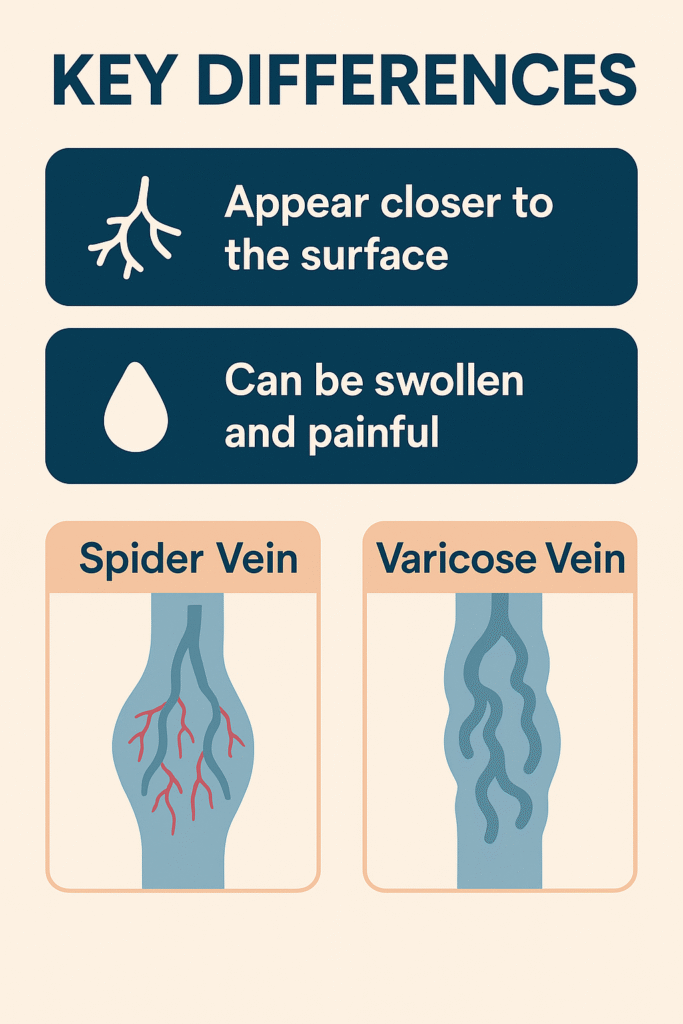
What Are Varicose Veins?
Varicose veins are larger, swollen veins that often twist and bulge above the skin’s surface. They are usually dark blue or purple and can cause aching pain, heaviness, and discomfort—especially after standing or sitting for long periods.
Key characteristics:
- Thick, rope-like appearance
- Bulging or twisted
- Often accompanied by pain, throbbing, or itching
- May lead to more serious issues like ulcers if left untreated
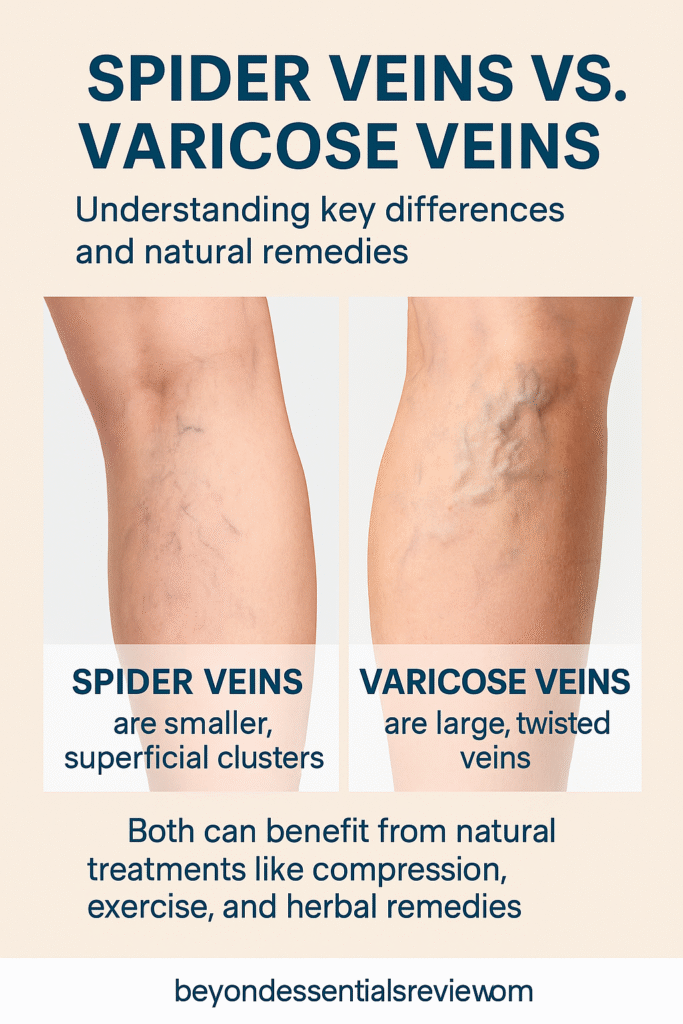
What Causes Spider and Varicose Veins?
Both spider veins and varicose veins are caused by weakened or damaged valves inside the veins. When these valves fail to function properly, blood pools in the veins instead of flowing back to the heart, causing the veins to enlarge.
Common contributing factors:
- Age (vein walls weaken over time)
- Hormonal changes (pregnancy, menopause)
- Genetics (family history)
- Sedentary lifestyle or prolonged standing
- Obesity
- Sun exposure (for facial spider veins)
Key Differences Between Spider and Varicose Veins
| Feature | Spider Veins | Varicose Veins |
|---|---|---|
| Size | Small and fine | Large and bulging |
| Location | Surface of skin | Deeper under skin, visible bulges |
| Symptoms | Usually painless | Aching, heaviness, swelling |
| Appearance | Web-like, flat | Rope-like, twisted |
| Common Causes | Hormones, genetics, sun exposure | Valve dysfunction, pressure |
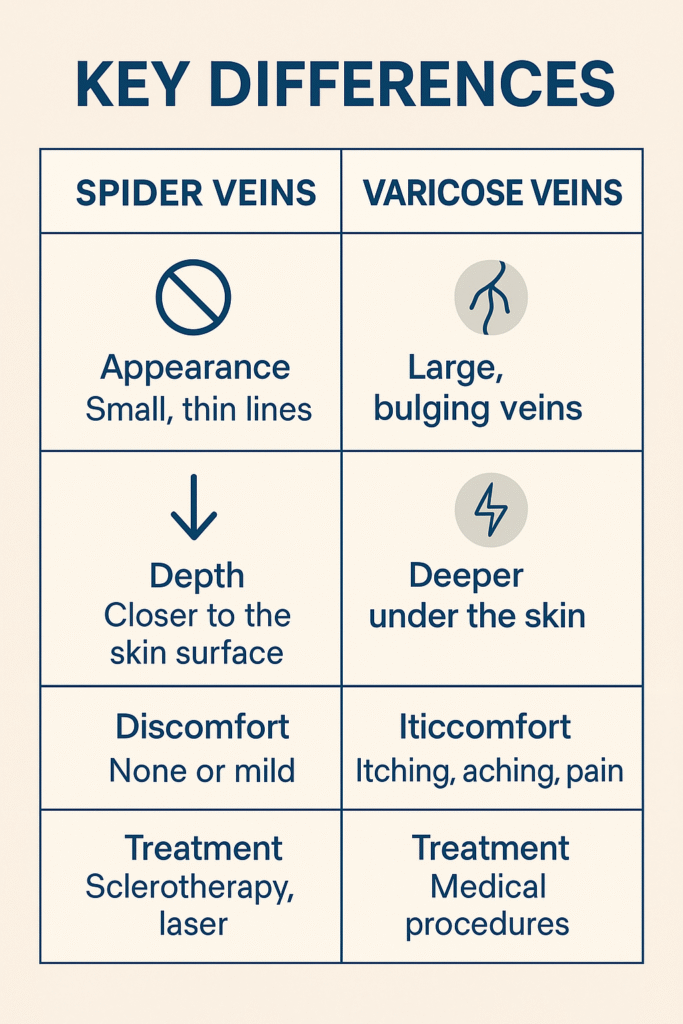
Natural Remedies for Spider and Varicose Veins
While severe cases may require medical intervention, many people find relief using natural approaches that improve circulation and strengthen veins.
1. Exercise Regularly
Low-impact exercises like walking, cycling, and swimming can help improve blood flow and reduce vein pressure.
2. Elevate Your Legs
Raising your legs above heart level several times a day can help reduce swelling and discomfort.
3. Compression Stockings
Wearing compression stockings applies gentle pressure, which helps veins function more efficiently.
4. Herbal Supplements
Horse chestnut, butcher’s broom, and grape seed extract are commonly used to strengthen vein walls and improve circulation.
5. Anti-Inflammatory Diet
Foods rich in antioxidants, flavonoids, and omega-3s—like berries, leafy greens, and salmon—may help reduce inflammation and support vein health.
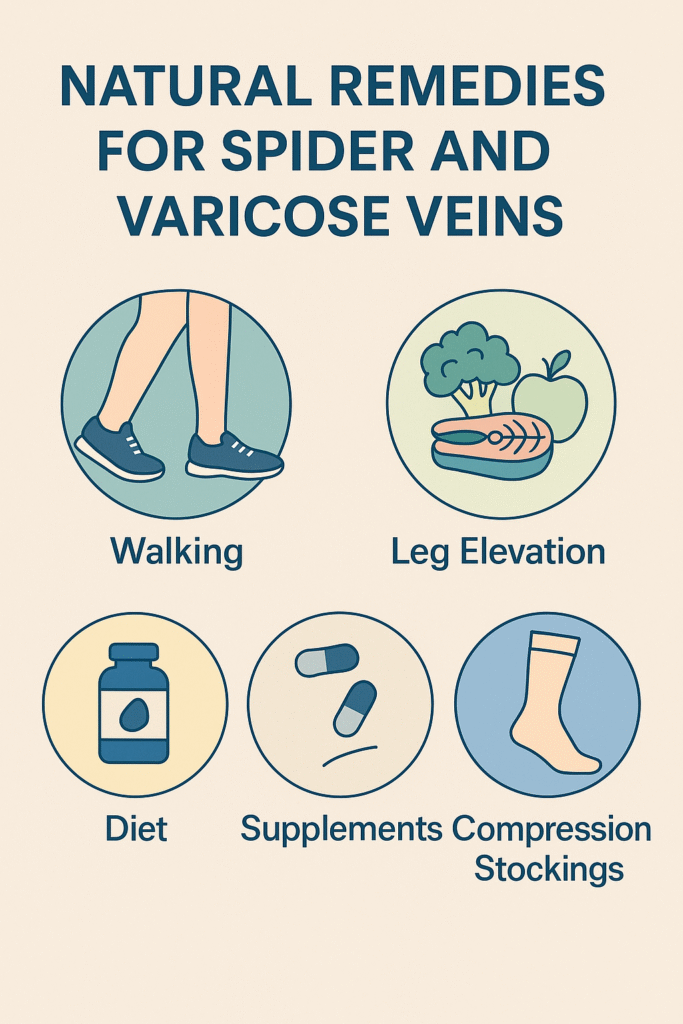
When to See a Doctor
You should consult a healthcare provider if your veins:
- Are painful or swollen
- Bleed or develop sores
- Feel hot or tender to the touch
- Interfere with daily activities
These may indicate a more serious circulatory issue, such as chronic venous insufficiency or blood clots.
Final Thoughts
Understanding the difference between spider veins and varicose veins is the first step toward choosing the right treatment. While both are common and treatable, taking early action can prevent them from getting worse and improve your quality of life.
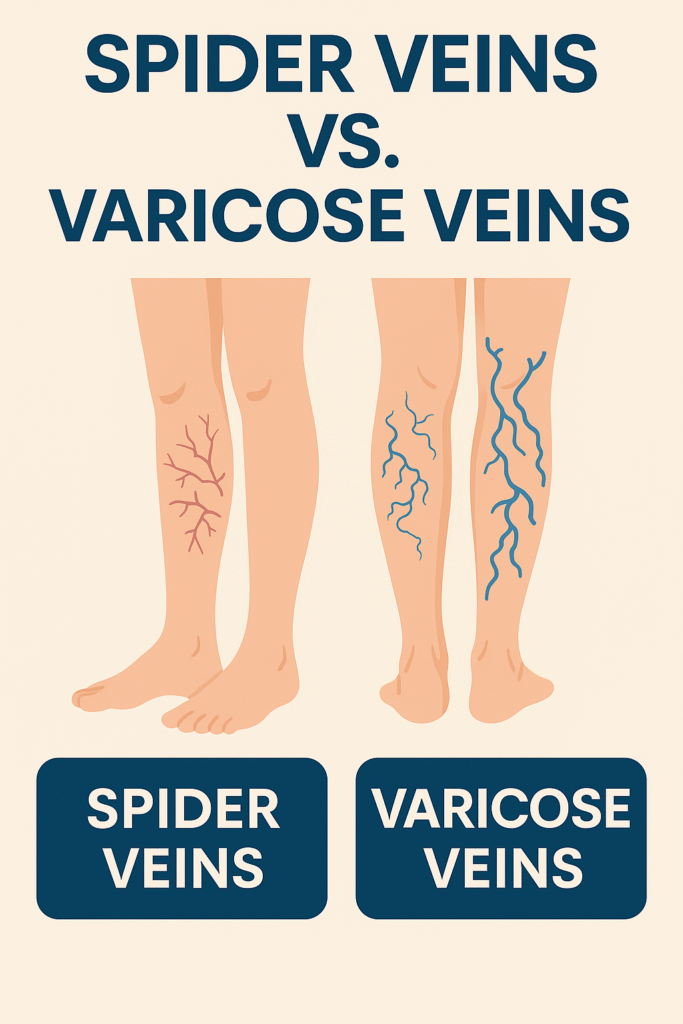
Pingback: Best Natural Supplements for Varicose Veins and Poor Circulation -